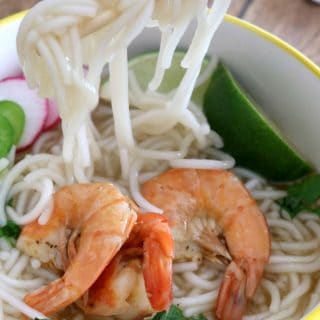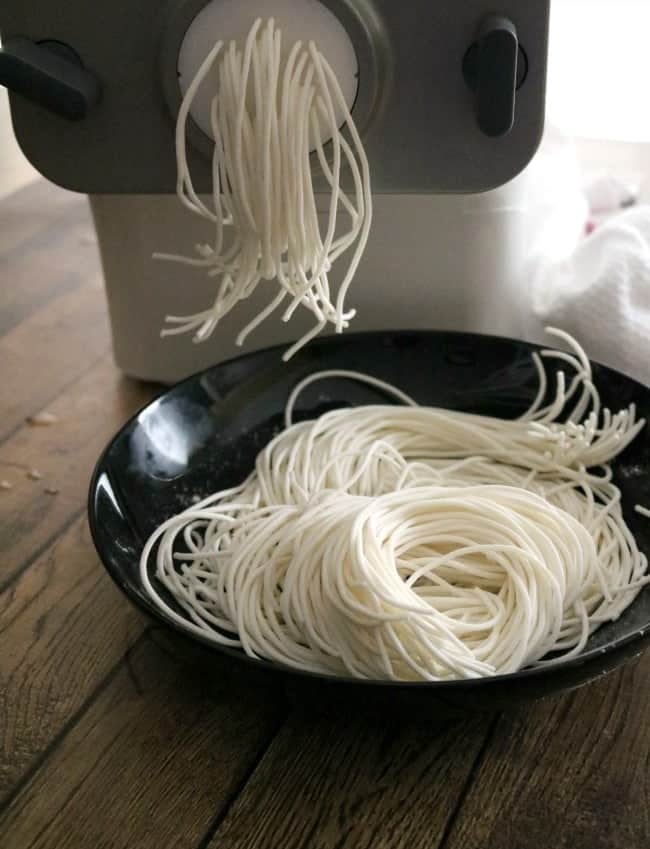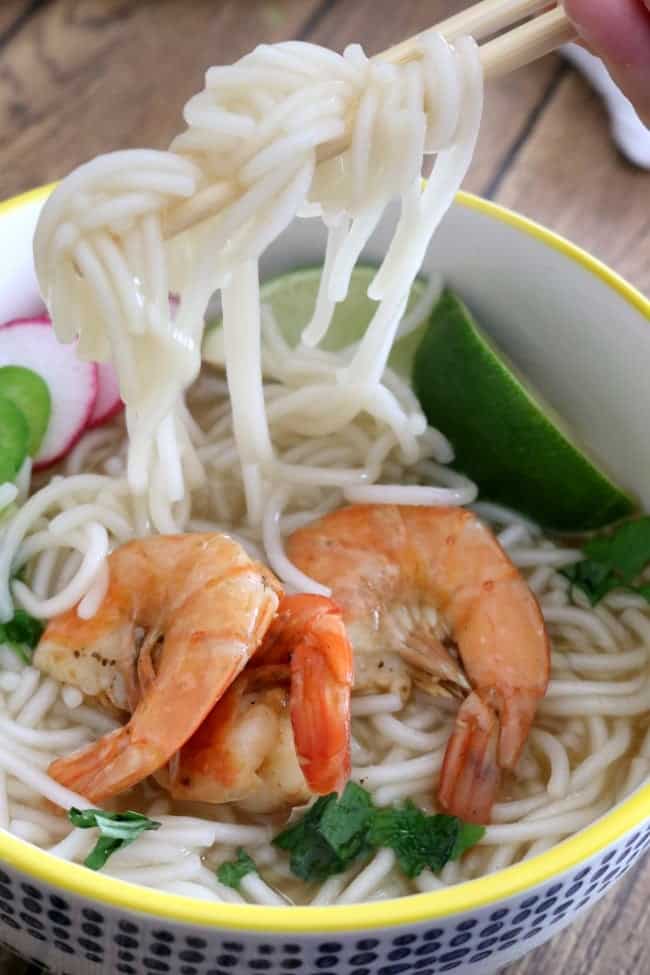Notes for the Philips Viva Compact Pasta Maker:
The original version of this recipe is too big for the Philips Viva Compact Pasta Maker. However, we can determine the 400 gram capacity of the Philips Viva compact machine by calculating a 3/4 batch of this recipe. By utilizing a formula that approximates 27.5 percent of the initial recipe size, we can obtain a gram weight that is nearer to a full batch for the Vivia compact (374 grams). I’ve provided directions for this in the recipe’s notes section below.

Alternatives to Xanthan Gum
You are welcome to experiment with any of these Xanthan Gum alternatives; I haven’t tested any of them. I have no idea how they will handle the recipe or behave in the extruder and machine.
- Psyllium Husk
- Chia seeds and water
- Ground flax and water
- Cornstarch
- Unflavored gelatin
- egg whites
- Agar agar
- Guar gum
- Konjac powder
The dough that the Philips pasta maker uses is, to put it mildly, unconventional, but it enables even a novice to produce a batch of fresh pasta or noodles in as little as ten minutes. The dough will appear to be crumbly and dry as it cycles. Resist the urge to add more water. Dough that is too wet will clog the extruder.
Stop the cycle and take a small sample of the mixture if you are unsure. It has the ideal consistency if, when squeezed between your fingers, it binds together without getting wet. The dough will clog the extruder if it is overly moist.
The dough texture pictured here is absolutely perfect!

I used the spaghetti disc that came with the machine to make our noodles. We also bought the Philips Advance Pasta Machine Accessory Discs, which came with pasta discs for pappardelle and angel hair pasta.
With this dough, the smaller angel hair-sized disc is ineffective. This recipe works well with the pappardelle disc, fettuccine disc, or pasta noodle discs. I immediately cooked the noodles in a shallow pan of boiling water after they were extruded.
After the noodles were cooked, I drained and cooled them before portioning them into smaller servings, putting them in separate zip-top bags, and freezing them.
You can keep noodles in the freezer for up to thirty days. You can store freshly made noodles in the fridge for up to seven days.

Being able to prepare homemade Asian rice noodles in ten to fifteen minutes is a great addition to any cook’s repertoire, as they are used in a plethora of dishes throughout Asia and the Pacific Rim.
Instructions for how to make homemade rice noodles using Philips pasta noodle machine:


2. Then, add 5 g of xanthan gum, and ⅛ teaspoon of salt in the noodle machine.

3. Cover the lid and turn on the noodle machine. Push the button for one cup setting. Let the machine run for a few seconds. Add 150ml hot boiling water slowly as the machine is running. (Don’t need to be exactly 150 ml. I normally do it around 150-160ml.)

4. Noodles will be done in around 10 minutes.

5. In a pot of boiling water, add the noodles and cook for about 2 minutes, or until they float on top of the water. Take caution as it might overflow; add some ice and bring to a boil.

6. Next, drain the noodles and give them a quick rinse under cold water.

7. Next, preheat a can of chicken broth to serve as the foundation for the soup. Serve it with meat, veggies, and either chili oil or sauce as extras.